Fire Damage Cleanup
O6 Fire Damage Cleanup Restoration Services restore commercial and industrial facilities devastated by fire.
Water, heat, and smoke can cause widespread damage, releasing toxic chemicals and possibly compromising the integrity of your building.
Once the fire’s been extinguished, our teams move quickly to clean and decontaminate the area, removing hazardous waste and residue in order to revive your operation and ensure the long term success and sustainability of your business.
Our comprehensive approach not only protects the health and safety of your staff, but mitigates financial losses and assists the claims process, while adhering to strict environmental regulations mandated by the Environmental Protection Agency.
O6’s Fire Damage Cleanup Process
In addition to endangering your property, equipment, and assets, commercial and industrial fires can devastate the surrounding environment. Smoke, soot, and ash often spread far beyond the initial flash point, polluting the soil, air, and groundwater with carcinogens, particulate matter, and volatile organic compounds. Over time, this type of contamination can degrade the soil and create an ongoing health risk. Besides irritating the eyes, nose, and mouth of anyone coming into contact with it, prolonged exposure often leads to respiratory problems and even increases the risk of certain cancers.
To mitigate these hazards, ensure the safety of your team and avoid any potential liability, O6 Fire Damage Cleanup Services is trained and equipped to breathe life back into your property and prevent further damage. We understand how harmful any disruption can be to your bottom line, which is why our process is careful and detailed.
Assessment
O6 consultants determine the extent of the damage and identify contaminants present in and around the site.
Safety
Before cleanup begins, we implement safety features to protect workers and community members. This not only includes protective equipment, but also boons and absorbent materials to prevent the spread of pollutants.
Removal
Without the right tools or preparation, removing fire debris can cause explosions, chemical exposure, or structural collapse. O6 teams work deliberately, carefully gathering and eliminating burned materials with minimal risk.
Hazardous Waste Management
Fire debris often contains dangerous substances, such as lead and asbestos, which have to be handled, packaged, and disposed of according to strict legal guidelines. Our safety protocols keep waste secure and control the spread of dust, allowing us to clear the area without creating additional danger.
Remediation
In cases where ash, soot, and chemicals have contaminated the soil, O6 remediation teams extract, treat, and dispose of pollutants with a variety of methods, including excavation, encapsulation, and solidification.
Water Clean-Up
After extinguishing a fire, firefighters generally leave behind large amounts of standing water and flame retardant compounds, such as PFAS (Per- and Polyfluoroalkyl Substances). These normally contain large amounts of soot and ash, as well as substances that can harm soil and groundwater, which must be collected, treated, and disposed of.
Air Monitoring
In facilities with industrial chemicals, we measure air quality to ensure hazardous fumes are contained within the property and don’t pose a risk to the surrounding environment. Our monitoring procedures guarantee the safety of workers, cleaning crews, and communities.
Documentation
O6 records and corroborates every step of the clean-up process, to ensure regulatory compliance and avoid expensive fines as well as to support insurance claims for property damage, business interruption, and liability coverage on behalf of our clients.
PFAS Contamination
PFAS contamination is a significant concern after any fire. Per- and Polyfluoroalkyl Substances (PFAS) are a group of synthetic chemicals resistant to heat, water, and oil. Due to their effectiveness in suppressing fires involving fuel, flammable liquids, or ignitable gasses (otherwise known as Class B Fires), they're a common component in a wide range of consumer and industrial products.
They're also the key ingredient in Aqueous Film-Forming Foams (AFFF), which are widely used to combat fuel fires, especially ones involving petroleum compounds such as gasoline, diesel, kerosene, and heavy fuel oil. The foam creates a film that prevents oxygen from reaching its fuel source, quickly smothering and suppressing fires wherever it’s applied.
However, the resulting discharge and runoff from firefighting operations also create considerable risks for human health and the environment. Unless contained, collected, and removed from the affected area, PFAS can infiltrate soil and groundwater, creating long-term hazards for the community.
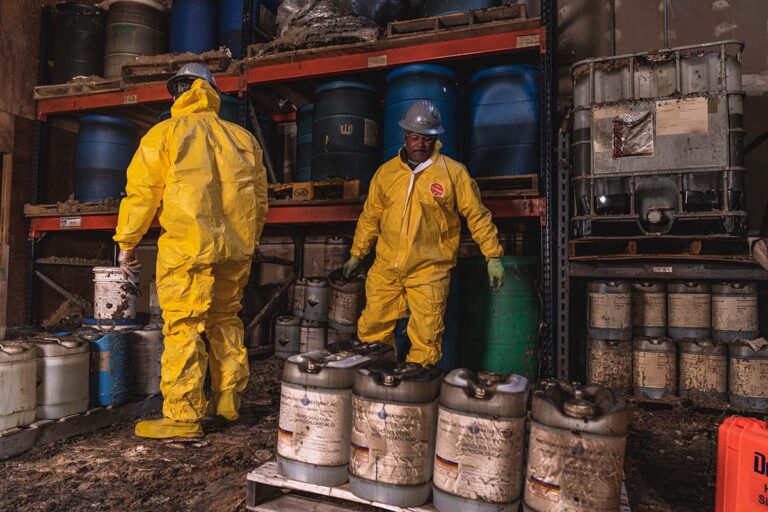
Managing this type of contamination is challenging due to a number of factors:
Persistence and Mobility
PFAS compounds don’t break down easily, which means they tend to linger in soil and water. Once released into an ecosystem, they tend to seep out in all directions, potentially contaminating a very large area.
Detection and Measurement
Pinpointing PFAS contamination requires specialized tools and laboratory analysis. Only once the data has been run can a remediation plan be formulated and executed.
Diverse Mixture
There are dozens of PFAS compounds, each with their own unique properties and behaviors; each requiring a separate treatment method to remove it from the environment.
Intricate Processing
Common treatment methods such as filtration and incineration are not always effective on PFAS compounds. More sophisticated technology such as activated carbon, ion exchange, and advanced oxidation may be required.
Limited Disposal Options
Few disposal facilities are prepared to handle PFAS-contaminated waste, which makes finding a suitable landfill both difficult and time-consuming.
PFAS and Regulations
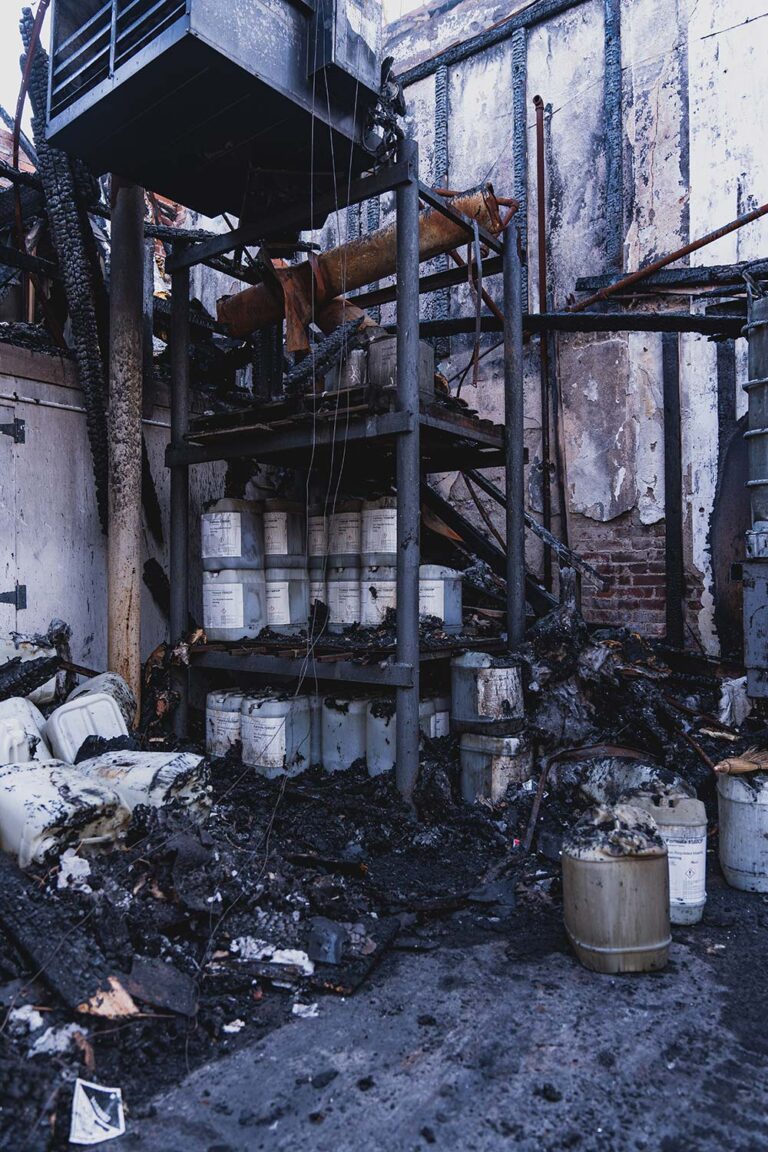
The EPA is currently developing a roadmap designed to curtail PFAS contamination throughout the United States. Though federal regulations haven’t been finalized, the agency is expected to specify health-based limits in drinking water. An advisory has already been issued for two PFAS compounds (perfluorooctanoic acid and perfluorooctanesulfonic acid), warning that concentrations over 70 parts per trillion carry significant health risks.
Individual states have also enacted their own rules, creating a complex regulatory landscape for companies to navigate. As the situation continues to evolve, it is important you stay informed in order to comply with state and federal guidelines. Partnering with an experienced environmental professional allows you to create and implement effective PFAS cleanup plans tailored to your industry, specific site conditions, and the latest legal standards.
Due to the shifting regulatory environment, best practices for PFAS cleanup are not always clear. Extensive experience, specialized equipment, and deep, technical knowledge is required to manage widespread contamination and prevent harmful chemicals from seeping into the local ecosystem, where they can threaten the soil, groundwater, and human health.
Facilities We Work With
O6 Fire Damage Cleanup Services assist a broad range of industries. Our familiarity with the risks, structures, and regulations involved in commercial activities allows us to decontaminate and restore all types of business and industrial operations, including:
- Oil Refineries
- Chemical Plants
- Manufacturing Plants
- Power Plants
- Food Processing Plants
- Wood and Paper Mills
- Foundries
- Airports
- Metalworking Shops
- Warehouses
- Shipping Centers
- Waste Treatment Centers
- Recycling Centers
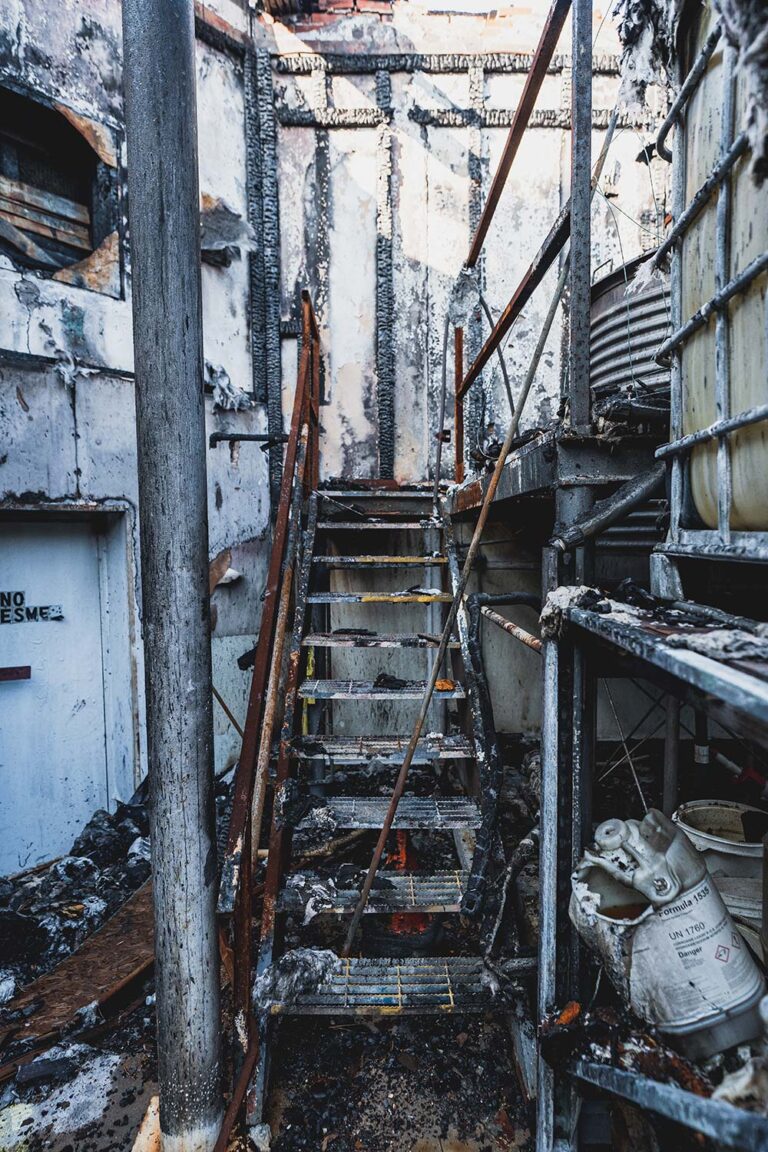
Commercial Fire Types and Causes
Fire can strike at any time. Regular inspections, preventative maintenance, stringent storage procedures, employee training, and safety protocols will reduce risk, but business owners should always be aware of the hazards present within their facility.
Electrical Fires
Overloaded circuits, faulty wiring, or damaged electrical devices can generate heat and sparks that catch paper, carpets, or furniture on fire.
Dust Fires
Fine particles generated by woodworking, metalworking, or agriculture can accumulate in the air and ignite due to heat, friction, and sparks.
Chemical Fires
Improper handling, storage, and disposal of flammable liquids can quickly trigger a destructive reaction that can destroy a lab, storage, or manufacturing facility.
Equipment Fires
Electrical faults, mechanical failures, and friction-induced overheating can cause machinery to break down and combust.
Heating Fires
An overabundance of combustible material, such as dust or gas, may cause furnaces to ignite. Poor ventilation compounds the danger by allowing excess heat to build up inside.
Gas Fires
Leaking gas lines or poor storage guidelines make it possible for gasoline or its fumes to come into contact with an open flame and ignite.
Call O6 for Fire Damage Cleanup Services
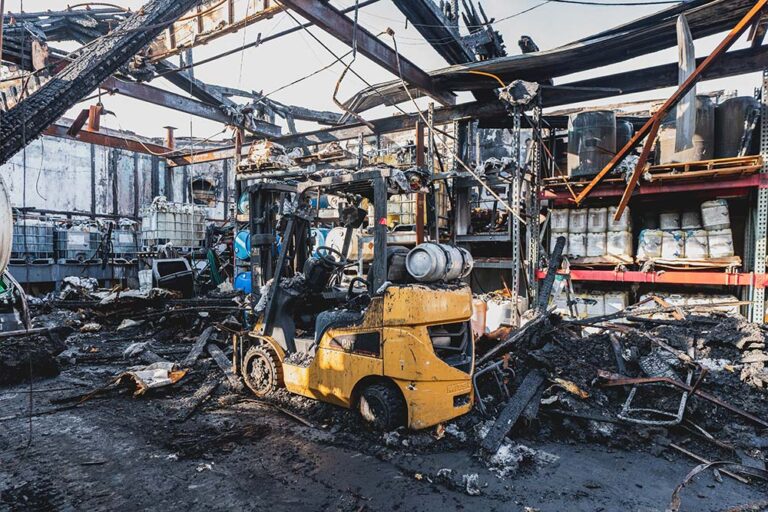
Fire damage poses an ongoing threat to property, communities, and the environment. Delayed cleaning efforts not only endanger staff; they can disrupt operations, leading to loss of revenue and possible legal penalties as chemical runoff contaminates the local ecosystem.
O6 Fire Damage Cleanup Teams respond quickly in the event of a fire ‒ removing, treating, and disposing of dangerous residue such as ash, soot, and PFAS compounds while preserving as much of your property as we can, relative to the function of your business, so you can rebuild and recover without serious delay.
Contact us today to learn how we can deliver a customized and practical solution for your project.
Latest News
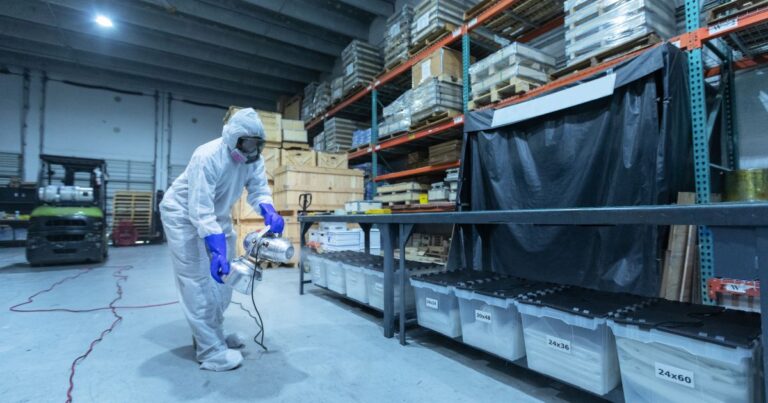
Company News, Environmental Remediation, Hazardous Waste
Why Industrial Cleaning Is Critical to Operational EfficiencyWhy Industrial Cleaning Is Critical to Operational Efficiency In today’s fast-paced industrial environment, operational efficiency ...
Read Article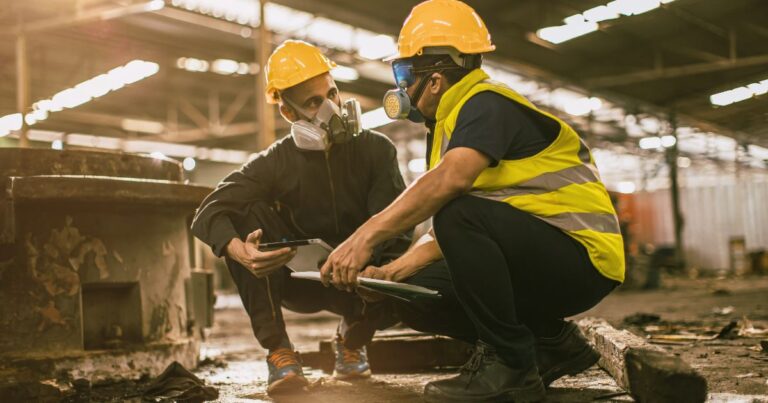 Understanding Waste Profiling: Why It Matters for Proper Disposal
Understanding Waste Profiling: Why It Matters for Proper DisposalUnderstanding Waste Profiling: Why It Matters for Proper Disposal In hazardous waste management, there’s one ...
Read ArticleTell Us Your Challenge. We’re Here to Assist.
"*" indicates required fields